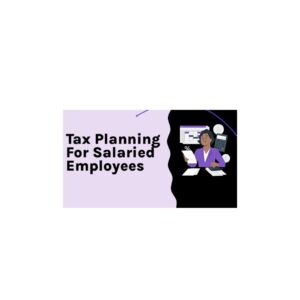 Tax Planning for Salaried Employees
Tax Planning for Salaried Employees

Tax planning for salaried employees involves utilizing various strategies to optimize your tax situation and reduce your tax liability.
Here are some key considerations:
1. Understand Tax Deductions:
Familiarize yourself with the deductions available to salaried employees. This includes deductions for expenses such as house rent allowance (HRA), standard deduction, medical expenses, and professional tax. Ensure that you claim all the eligible deductions to minimize your taxable income.
2. Utilize Section 80C Deductions:
Section 80C of the Income Tax Act provides several investment options that offer tax deductions. Consider investing in tax-saving instruments such as Employee Provident Fund (EPF), Public Provident Fund (PPF), National Savings Certificates (NSC), tax-saving fixed deposits, and Equity Linked Savings Scheme (ELSS). These investments can help reduce your taxable income up to the specified limit.
3. Optimize HRA Benefits:
If you receive HRA as part of your salary, understand the provisions related to HRA exemptions. Ensure that you provide the necessary documents, such as rent receipts, to claim the HRA exemption. If you live in your own house or do not receive HRA, you may still be eligible for claiming tax benefits under different sections like home loan interest, if applicable.
4. Plan Leave Travel Allowance (LTA):
LTA is a component of your salary that provides tax benefits for travel expenses. Familiarize yourself with the rules and conditions for claiming LTA and plan your vacations accordingly to make the most of this allowance.
5. Consider Medical Reimbursements:
If your employer offers medical reimbursement as part of your salary package, ensure that you keep track of eligible medical expenses and submit the necessary documents to claim the reimbursement. This can help you save taxes on medical expenses incurred by you and your family.
6. Evaluate Salary Restructuring:
Discuss with your employer the possibility of restructuring your salary components to optimize tax benefits. For example, you may consider increasing contributions to EPF or opting for a higher contribution to the National Pension Scheme (NPS) to benefit from additional tax deductions.
7. Keep Track of Tax-Saving Investments:
Maintain a record of tax-saving investments and expenses throughout the financial year. This will help you accurately calculate your taxable income and claim deductions while filing your income tax return.
8. File Income Tax Return:
Ensure that you file your income tax return within the specified due date. Filing your return on time not only avoids penalties but also allows you to claim refunds, if eligible.
It’s important to note that tax planning strategies may vary based on individual circumstances and the tax laws applicable in your country. It’s advisable to consult with a tax professional or financial advisor who can provide personalized guidance based on your specific situation.
For further details access our website https://vibrantfinserv.com
To visit- https://www.incometax.gov.in
Tax planning for salaried employees